Transformation Leaders: Stop Failing/Start Measuring
By Michael McCalla, President of Lean Agile Intelligence
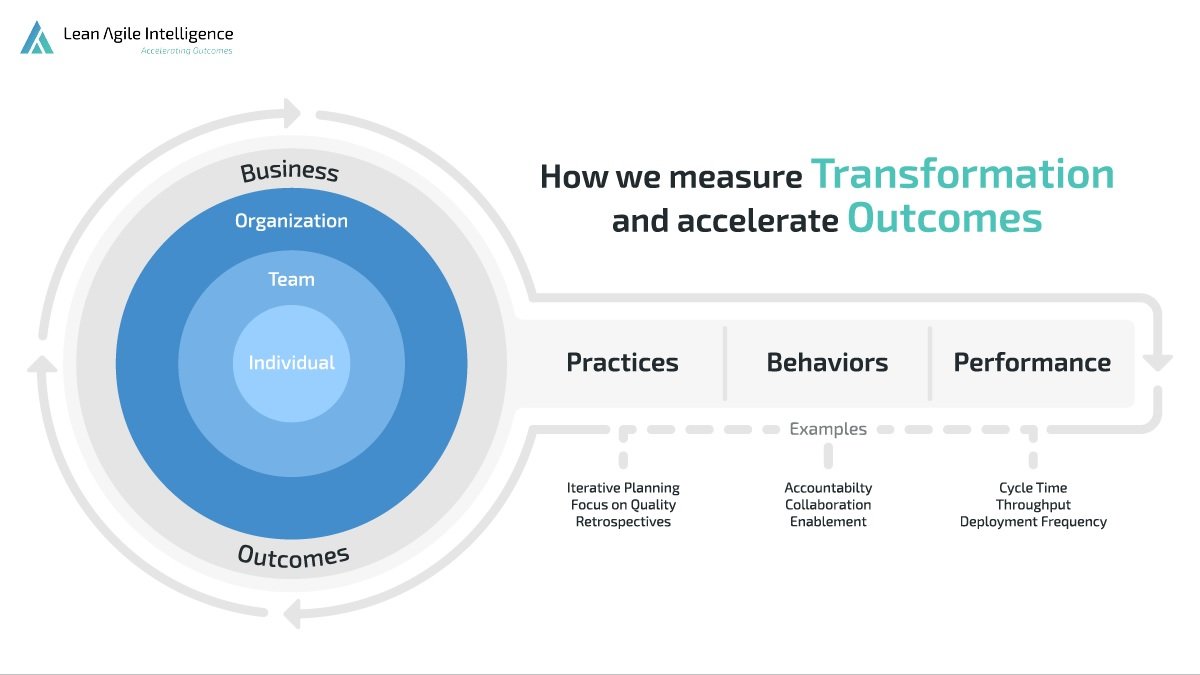
McKinsey recently reported that 70% of transformation efforts fail because they do not create the desired benefits. To understand how we got here, let's first revisit what drives the need to "transform."

What is the Problem?
Digital technologies and globalization have made markets much more volatile. Traditional organizations built to optimize for efficiency are struggling to respond to the changing markets and customer demands. The inability to adapt puts them at risk of being disrupted by smaller, more nimble competitors and unable to compete.
What is the Solution?
To mitigate this risk, many traditional organizations are aiming to "transform" their practices, behaviors, and performance to enable more resiliency, responsiveness, and value delivery. At the underpinnings of these transformations are the principles of collaboration, transparency, empowerment, enablement, customer orientation, and continuous improvement.
Why is the Solution Not Working?
These types of transformations are challenging due to the complex nature of an organization and the people that make them up. It requires a shared vision by all impacted stakeholders. We routinely speak to our customers about their pain points. The common themes around stakeholders are:
-
They do not understand the magnitude of the change
-
They lack clarity on the current state, next steps, and how they need to contribute
-
They are not aligned on the outcomes of the transformation
Stakeholders often become skeptical when they don't see an immediate benefit associated with the transformation, and tangible benefits may take time. They see it as just another process change that is disrupting their operations. On the surface, they make you think they are participating in the change, but deep down, they have disengaged!
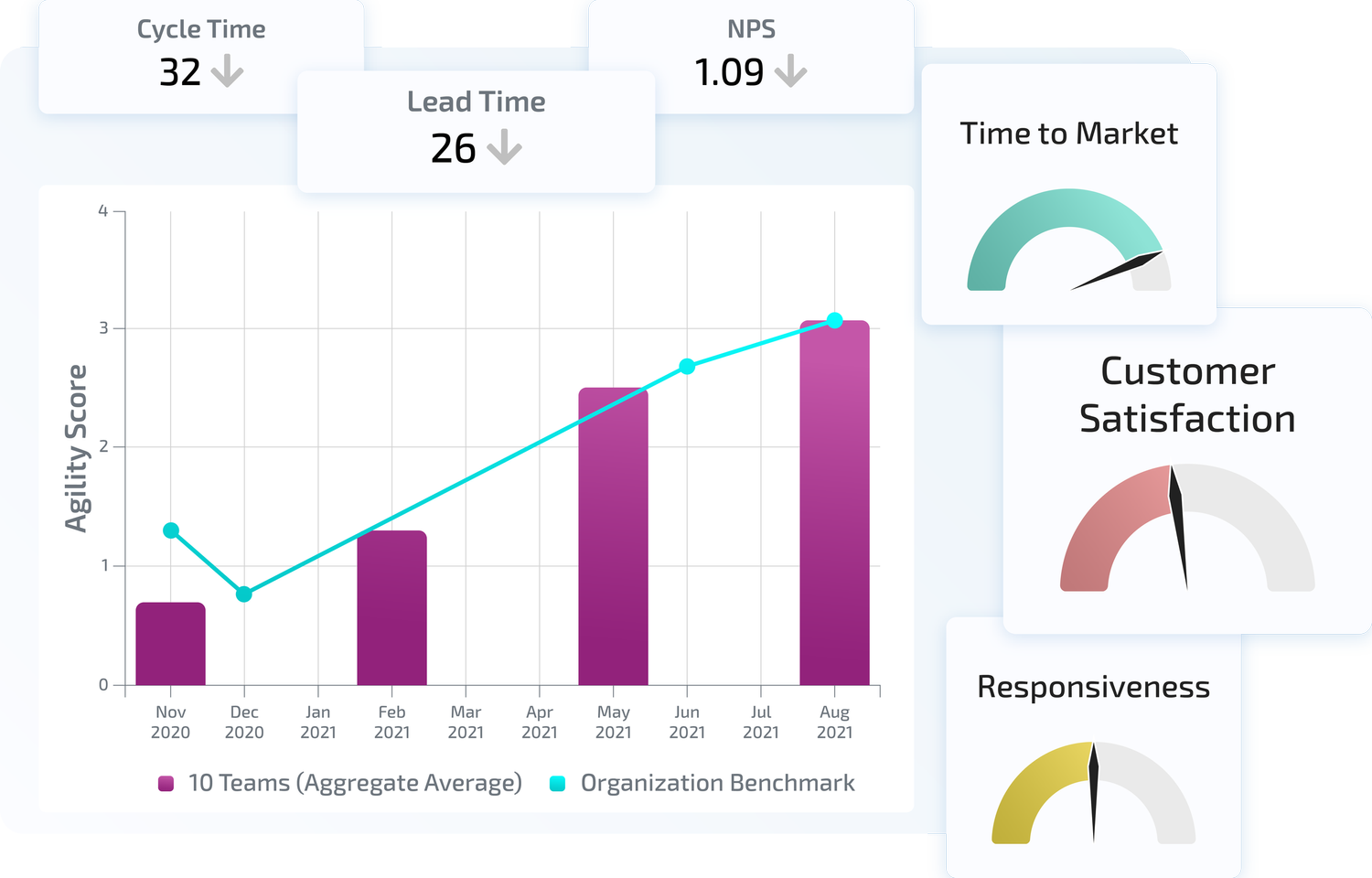
How to Course Correct?
The problem is stakeholders can't "see and feel" the transformation, especially early in the process. We, as transformation leaders, need to simplify things and make the transformation visible!
A comprehensive transformation measurement strategy provides the data and visualization to track the transformation. Data and visualization are a transformation leader's best friend! They make it easier to articulate the current state, next steps, and tracking towards achieving desired outcomes.
What is a Measurement Strategy?
Any measurement strategy must consider two types of time-based indicators, leading and lagging.
A lagging indicator is an "after-the-event" measure that indicates whether a goal was met. It represents the outcome of certain activities. Lagging indicators typically cannot be obtained until late in the process.
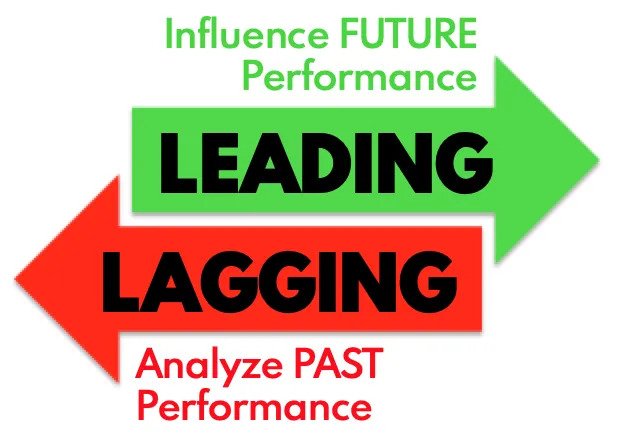 Almost all organizations use lagging indicators because of the need to report to stakeholders and shareholders.
Almost all organizations use lagging indicators because of the need to report to stakeholders and shareholders.
A leading indicator is an "in-progress" measure that helps us predict future outcomes and indicates the level of advancement towards a goal. It represents the progress of activities that are believed to lead to the achievement of the goal. Leading indicators can be attained early in the process.
Many organizations ignore leading indicators because they are often qualitative, difficult to collect, and hard to formulate into measurements.
Truth: Complexity Requires an Empirical Approach
We know from agile that complex problems such as a transformation require an empirical approach in which we routinely stop to "inspect and adapt." In other words, how have we progressed, what have we learned, and what do we need to do differently to achieve our goal?
Truth: An Empirical Approach Requires Leading Indicators
Early in the transformation, leading indicators fuel the "inspect and adapt" process. They provide stakeholders with something tangible to visualize the transformation. They simplify the complex nature of the change and create a shared understanding of the current state. They help drive the stakeholder engagement, alignment, and accountability often lacking in these efforts.
What are Transformation Leading Indicators?
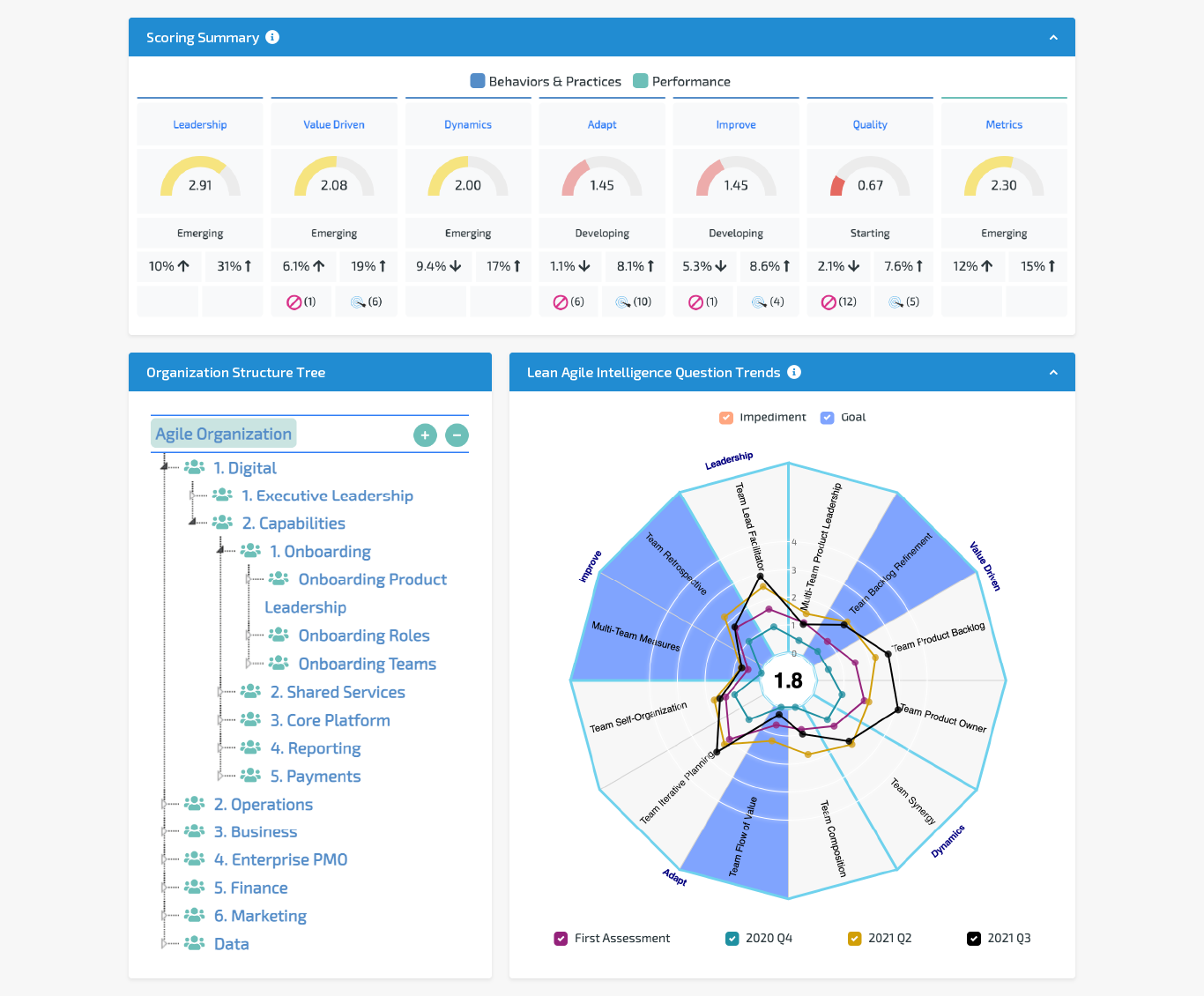 A leading indicator indicates the level of advancement towards a goal. Any organization embarking on this journey aims to "transform" its practices, behaviors, and performance to enable more resiliency, responsiveness, and value delivery.
A leading indicator indicates the level of advancement towards a goal. Any organization embarking on this journey aims to "transform" its practices, behaviors, and performance to enable more resiliency, responsiveness, and value delivery.
We have seen in the market that organizations that embrace the following are more likely to achieve resiliency, responsiveness, and value delivery.
-
Practices predicated on collaboration, transparency, and customer orientation
-
Examples include PI planning, product demos, and customer discovery techniques
-
-
Behaviors predicated on purpose, empowerment, and collaboration
-
Examples include team safety, decentralized decision-making, and growth mindset
-
-
Performance Metrics predicated on value delivery, faster time to market, and responsiveness to change
-
Examples include NPS, cycle time, and lead time.
-
Leading transformation indicators should measure the maturity of these new practices, desired behaviors, and performance metrics.
By measuring these three early in the process, we can gather insights that help prioritize improvement opportunities, understand impacts, and formulate clear next steps.
What are Transformation Lagging Indicators?
A lagging indicator is a measure that indicates whether a goal was met. Any company operating in today's volatile markets aims to stay relevant and ahead of the competition. To achieve this, they must respond to market events, withstand difficult market conditions, and deliver value to their customers.
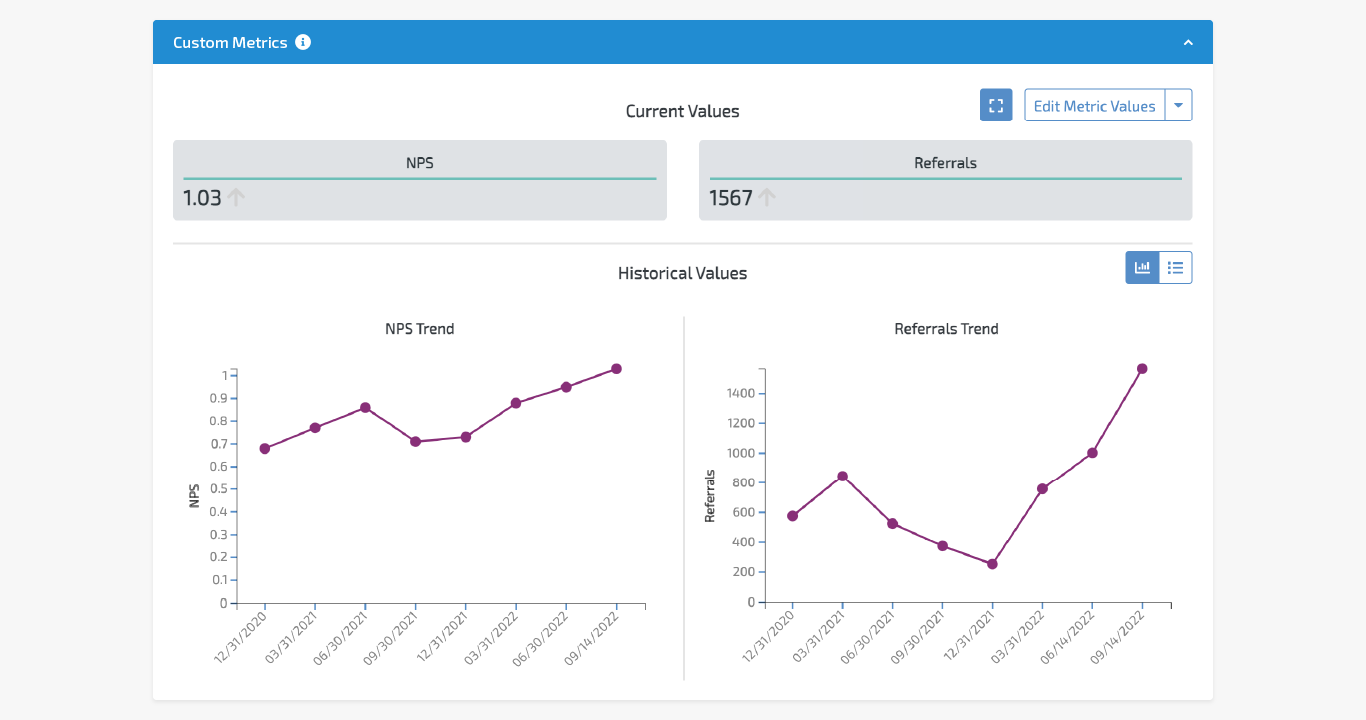
Lagging indicators for transformation should measure their ability to achieve these outcomes.
Some examples would include:
Market Resiliency: Market Share, Cash Flow, Diverse Product Lines, Supplier Dependency Ratio, eNPS
Market Responsiveness: AARRR (Acquisition, Activation, Retention, Referral, Revenue), Customer Value Delivery, NPS, Retention, Referrals
Value Delivered: NPS, ROI, Retention, Referral
Why Do You Need Both Leading and Lagging Indicators?
If an organization only uses lagging indicators, it could be too late to adjust to achieve its goals. This is especially true in complex environments such as organizations transforming because change will be emergent. When lagging indicators are complemented with leading indicators, progress toward the goal can be tracked, and adjustments can be made to achieve the desired outcomes.
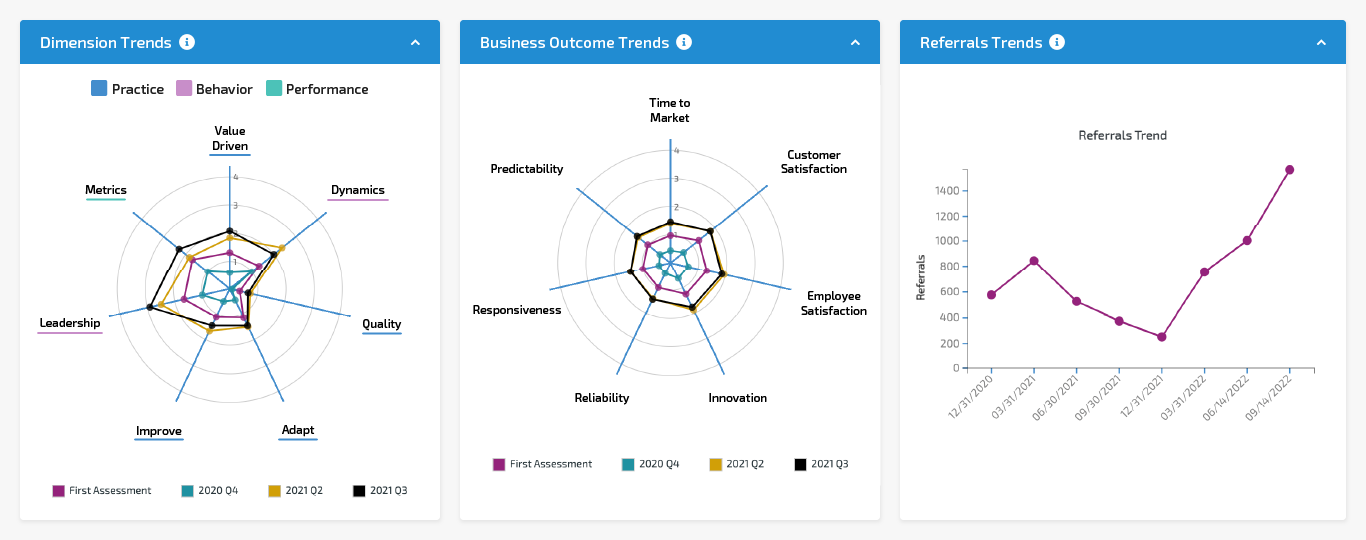
Where to Start?
If you are already on your transformation journey, simply start measuring:
-
Team Practices & Behavior: Are they high-performing?
-
Leadership Behaviors: Are they enabling?
-
Organization Agility: Is the ecosystem enabling?
It just so happens that you can measure all three using Lean Agile Intelligence. We have done the heavy lifting by creating templates and questions that will enable you to get a baseline today. Our aggregate result capabilities will also give you a holistic view to drive clarity on the current state and next steps with stakeholders.
Start Measuring, Visualizing, and Simplifying today using Lean Agile Intelligence!
References:
-
Birkinshaw, Julian (2022), How Incumbents Survive & Thrive, Harvard Business Review
-
Bradley, Chris; O’Toole, Clayton (2016), An Incumbents Guide to Digital Disruption, McKinsey Quarterly
-
Denning, Steve (2021), Why Digital Transformations are Failing, Forbes
-
Qu, David (2021) How Incumbent Leaders Can Manage Disruptive Innovation, Forbes
-
Robinson, Harry (2019) Why Do Transformation Fail, McKinsey